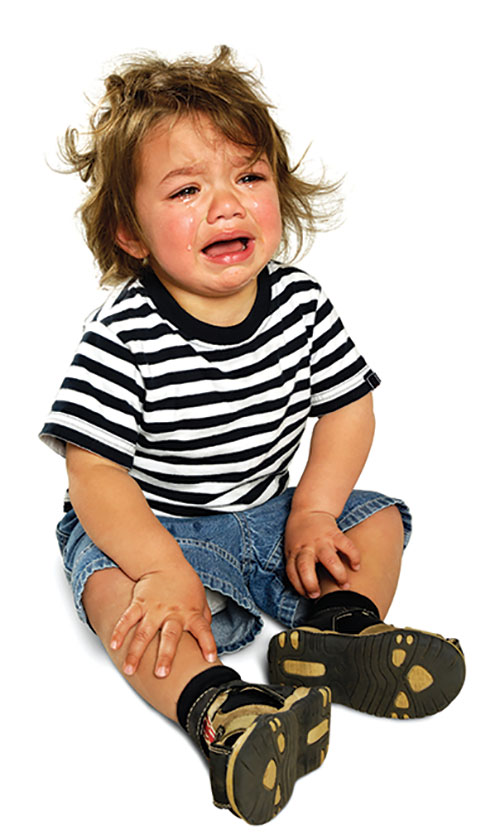 When Debbie Koenig’s son started to refuse foods he had previously loved, she realized that his picky eating was a power issue.
When Debbie Koenig’s son started to refuse foods he had previously loved, she realized that his picky eating was a power issue.
“The more I pushed, the worse it got,” says the New York mother and author of Parents Need to Eat Too: Nap-Friendly Recipes, One-Handed Meals, and Time-Saving Kitchen Tricks for New Parents.
Picky eating, thumb-sucking, tantrums — there is no shortage of challenges that parents of toddlers deal with on a daily basis. What’s the best way to handle them? Is there a way to prevent them? We talked to parents and experts to find out.
Picky eating
Despite Koenig’s experience, her son is now a healthy, growing 7-year-old. While she did have to struggle with her son’s picky eating, she learned how to deal with it.
“It’s my job as the parent to provide a variety of healthy foods. It’s my son’s job to decide whether and how much to eat of each thing,” she says. That might mean that she prepares vegetable lo mein for the family and her son only eats the noodles. Problem? Nope. She trusts that as he watches his parents enjoy the meal, eventually he will come around.
Koenig has found a good balance of control for her family: She chooses what’s for dinner, making sure that there’s at least one thing that she knows her son likes. But she doesn’t cook just for him.
“Don’t push!” she suggests. “Little ones have very little say in their own lives, so they grab power wherever they can. Let your child, even a very young one, decide what food to try. And if he or she refuses something, don’t say anything — just try again a few days later.”
Tantrums
We’ve all witnessed toddler tantrums, often emotionally charged and way too often, very public. What to do?
First, understand what they are and why they happen.
Toddlers are at an age when they start to see themselves as separate from their parents — and they’re expressing their own will more strongly, says Jennifer Rees of Promoting First Relationships at the University of Washington. “Tantrums really are a necessary part of a child’s development as he seeks to gain in competence and autonomy,” Rees says.
So, how to deal? Local experts gave us plenty of advice: Offering choices when appropriate — such as asking if your child would like to wear a blue shirt or a red shirt — helps meet the child’s need for control.
Try talking through things that are going to happen and offer your child countdowns for transitions. And pay attention to how your child is feeling; try to keep him from becoming too hungry, tired or overstimulated.
Sometimes you may have to redirect the child by offering something he can do instead of can’t, Rees says. When you have to say “no” to something, help your child feel understood by talking through her emotions.
And know that despite a parent’s best efforts, tantrums still happen. “What we can do is to stay close by our child and let them know that we are there for them when they are ready to move on,” Rees says.
Biting
Just as tantrums can surface when a child won’t bend to an adult’s requests, biting can come from a toddler’s frustration. It’s also a normal part of development, says Dr. Rachel Hill, a family medicine physician at Swedish in Seattle.
“If your child bites you, let her know firmly that it’s not acceptable to bite: ‘No bite’ or ‘No. We don’t bite.’ Let them know that biting hurts you. It makes you sad. Teach them to speak about their emotions or their needs instead of biting,” Hill advises.
What if your child bites a friend? Separate the biter if necessary, comfort the child who’s been bitten and clean the wound. When ready, the biter can even help comfort the child he or she bit.
Be careful how you respond to small biters, says Dr. Kathi Rosen, a pediatrician at Virginia Mason Sand Point Pediatrics. “Do not reward the biter with attention — and even negative emotion is attention. Be calm,” she says, “and be sure to reinforce positive and appropriate behavior. Praise the child for these often.”
Masturbation
Masturbation — yes, it’s really called that, or could also be referred to as “body self-exploration” or “self-stimulation” behaviors — is totally normal in most cases, says Dr. Mollie Grow, a pediatrician at Seattle Children’s Hospital.
“We have to walk the balance of acknowledging that it is OK to explore our bodies while teaching appropriate social norms,” Grow says.
One way parents can do that is to help children understand that there are things we do in public — such as eating and playing — and things we do in private, such as going to the bathroom or touching our genitals, she says.
It’s only in rare situations that masturbation is problematic — such as when it becomes very frequent or interferes with normal behaviors or socialization, Grow says. When that happens, “then we need to think about stress in the child’s life, lack of enough physical love or positive attention, or extreme situations like abuse.”
Thumb-sucking
For some babies, it’s the pacifier. For others, it’s the thumb. And for some, the practice goes on much longer than the parent would like.
Is this really a cause for concern? Not so much, says Rosen.
“Thumb-sucking is a great way for a child to self-soothe, and gives the child a tool to use for calming and soothing when stressed,” she says. “I don’t worry much about it.”
Keep in mind that thumb-sucking may actually increase around times of transition or stress — such as when, for example, a new baby arrives or when there are changes in the school or classroom, she says.
Most kids will stop sucking their thumbs by age 5, Rosen says. “A lot of kids are influenced to stop by their non-thumbsucking peers at preschool. And many transition off a thumb as they find alternative ways to soothe themselves.”
If you’re concerned about thumb-sucking, have a chat with your child’s dentist. And relax. “Just be calm about it and respect it for what it is,” says Rosen.
Daytona Strong is a journalist who has written for a variety of local and national media. She writes about food, family and her Scandinavian heritage on her blog, Outside Oslo.











